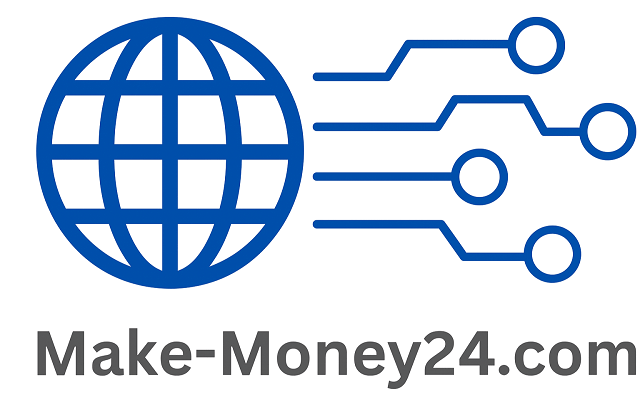Setting the right freelance rates can be a daunting task for professionals navigating the gig economy. The challenge lies in balancing competitive pricing with fair compensation for your skills and expertise. Understanding your worth and the market dynamics is crucial to thriving in the freelance world. Whether you’re a seasoned freelancer or just starting, adopting strategic pricing methods can make a significant difference in your career trajectory.

How to set your freelance rates
To determine your freelance rates effectively, begin by assessing your skills, experience, and the value you bring to clients. Consider your educational background, specialized knowledge (improving professional skills), and past work accomplishments as the foundation of your pricing strategy. Gauge the demand for your services within your industry by researching prevailing market rates. Websites like Upwork, Glassdoor, or industry-specific forums can provide insights into what others with similar skills charge. This step ensures that your rates are competitive while reflecting your unique value proposition.
While market research sets the baseline for your pricing, another vital aspect is understanding the cost of running your freelance business. Unlike traditional employees, freelancers bear the burden of covering expenses like health insurance, retirement savings, and business overheads. Calculate these costs meticulously along with your desired income to determine the minimum rate you need to sustain yourself comfortably. This approach prevents undervaluing your services and ensures long-term financial stability.
Finally, consider implementing a flexible pricing model that can adapt to different client needs and project scopes. Offering tiered packages can cater to a broader clientele while allowing you to upsell premium services to those willing to invest more for greater value. For instance, you might provide a basic package at a competitive rate, a mid-tier option with additional features, and a premium package with full-service offerings. This strategy not only maximizes your income potential but also matches services with appropriate pricing, fostering client satisfaction and loyalty.
Setting the right price for your products or services is a crucial balancing act—one where success hinges upon a deep understanding of both your market and your competitors. It’s not just a matter of matching or undercutting competitor prices, but rather developing a strategy that considers the unique value you bring to the table. To navigate the competitive landscape effectively, mastering the art of market analysis and competitor research is essential for maintaining profitability while staying ahead of the curve.
Analyzing the market and competitors
To conduct a thorough market analysis, start by identifying who your potential customers are and understanding their needs, preferences, and buying behaviors. This involves not only demographic research but also gathering insights into customer psychographics and trends within the industry. Investing in market research tools like surveys, focus groups, and data analytics software can provide invaluable information. For instance, a fashion retailer might track consumer preferences via social media analytics to stay updated on the latest trends. By aligning your offerings with market demand, you ensure that your pricing strategy is built on a solid foundation of real-world data.
Competitor analysis, on the other hand, requires a keen eye for detail when evaluating direct and indirect competitors. This involves examining their product offerings, pricing strategies, market position, and customer reviews. Tools like SWOT analysis (Strengths, Weaknesses, Opportunities, Threats) can help in identifying areas where competitors fall short, which can be advantageous for positioning your offerings strategically. For example, a tech startup may notice that a competitor’s product isn’t user-friendly and use this as a springboard to highlight its user-centric design while justifying a premium price point. Understanding where you stand relative to your competitors empowers you to refine your market approach significantly.
Ensuring competitiveness in pricing does not mean you need to be the cheapest option available. Instead, aim to offer exceptional value that justifies your pricing. Consider factors such as brand reputation, service level, and additional features that competitors may lack. Utilizing a value-based pricing strategy can set you apart when these elements are communicated effectively. For instance, if you are a service provider with a stellar track record of reliability and high ratings, use this as leverage to command higher prices compared to a lesser-known competitor. Always remember, the goal is not merely to compete on price but to convey a compelling reason why your price point ultimately serves the customer’s best interests.
Choosing the right billing strategy is essential for freelancers who want to optimize their income and manage client relationships effectively. The challenge often lies in deciding between hourly and project-based billing, each of which serves different needs and scenarios. Understanding these billing models’ intricacies can significantly enhance a freelancer’s ability to quote projects, manage client expectations, and ultimately derive greater satisfaction from their work engagements.
Hourly vs project-based billing
Hourly billing is a common approach in the freelance world, often appealing due to its straightforwardness. This method allows freelancers to charge clients based on the actual time spent on a project. A key advantage here is the flexibility it offers; freelancers can adapt to changes or additional tasks without renegotiating a new contract. This model also provides clients with a transparent view of what they’re paying for, building trust through detailed work logs. However, hourly billing can sometimes disincentivize efficiency and might lead to earnings caps when freelancers become more proficient and can complete tasks more quickly.
On the other hand, project-based billing involves setting a fixed price for the entire project regardless of how much time it takes to complete. This method can be advantageous when freelancers have a good grasp of the project’s scope and their speed. Project-based pricing incentivizes efficiency and often rewards freelancers who can deliver high-quality work faster. Moreover, this model allows freelancers to potentially achieve higher earnings if they manage to complete the project ahead of schedule. Nonetheless, the primary risk here is underestimating the project’s time requirements, which could lead to reduced effective hourly rates and the potential for scope creep—a situation where additional tasks expand the project’s workload without additional compensation.
Ultimately, the choice between hourly and project-based billing should align with the freelancer’s style of work, project type, and personal preference. For instance, choosing hourly billing might be better for projects with many unknowns or ongoing work that requires flexibility. Conversely, project-based billing can be more lucrative for well-defined tasks with clear outcomes. A practical approach can involve using a hybrid model; freelancers can negotiate hourly rates for initial consultations or discovery phases and transition to a project-based rate once the project’s scope is fully understood. By assessing each project’s unique demands and their workflow habits, freelancers can choose the model that best aligns with their business goals and maximizes their earning potential (digital marketing trends).
In the ever-evolving landscape of business, mastering the art of pricing is essential for sustainable growth. As market conditions shift and your offerings improve, the necessity of increasing prices becomes inevitable. However, success lies not simply in the act of changing a price tag but in executing this change with strategic precision. Knowing when and how to raise prices ensures customer loyalty, reflects enhanced value, and responds to market dynamics effectively (improve your page ranking).
When and how to increase prices
Determining the optimal time to raise prices begins with a thorough understanding of your value proposition and the market environment. An excellent time to consider a price increase is when you’ve expanded your product or service offerings, enhanced quality, or when significant improvements in customer experience have been implemented. Another key indicator can be inflation or rising costs that impact your bottom line. For instance, if you’re running a digital marketing agency that recently incorporated advanced analytics services, these enhancements justify a price adjustment to reflect the increased value you deliver to clients.
Once you’ve identified a justifiable reason to increase prices, the next step is to develop a strategy that minimizes customer pushback. Transparency and communication play critical roles here. Inform your clients well in advance of any changes and clearly articulate the reasons behind the increase, emphasizing the new value they will receive. Offering tiered pricing or bundling services can soften the impact of a price hike and provide customers with options that still align with their budget while highlighting the value of your premium offerings.
After implementing a price increase, it is essential to monitor the market’s reaction and adjust accordingly. Pay attention to customer feedback and retention rates, as these metrics can provide invaluable insights into how well your price change was received. Additionally, keep an eye on competitors and industry trends to ensure your pricing remains competitive yet profitable. Handling price increases deftly not only maintains the trust of existing customers but can also enhance your brand reputation and market positioning, fortified by the confidence that your pricing is a reflection of the true value you offer.

